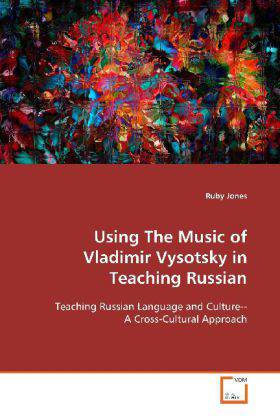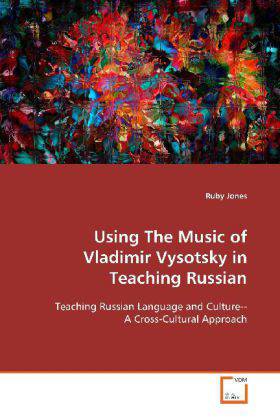
- Afhalen na 1 uur in een winkel met voorraad
- Gratis thuislevering in België vanaf € 30
- Ruim aanbod met 7 miljoen producten
- Afhalen na 1 uur in een winkel met voorraad
- Gratis thuislevering in België vanaf € 30
- Ruim aanbod met 7 miljoen producten
Zoeken
Using The Music of Vladimir Vysotsky in Teaching Russian
Teaching Russian Language and Culture--A Cross-Cultural Approach
Ruby Jones
Paperback | Engels
€ 48,45
+ 96 punten
Omschrijving
Using vocal music in the classroom to teach language
and culture can encourage students to take charge of
their own learning. Most students who study languages
have elevated expectations and the problem is
exacerbated by commercial products which promise
that, You will speak like a native in months! When
these high expectations are not met, many students
stop trying long before they approach their goal.One
way to help students not lose hope is to help them
improve their language skills themselves beyond that
usually attainable in the classroom. By introducing
students to the music of the Soviet bard Vladimir S.
Vysotsky early in their language learning, the
Russian language teacher can provide versatile,
authentic language material. The songs by Vysotsky
are similar to the blues, purported to be the
outgrowth of suffering and unique to the USA. Jim
Crow and Communism shared a trait a large number of
citizens without power or enforceable rights. The
author contends that Vysotsky s style of music arose
from such a situation in the USSR. The historical
similarities and the music which arose from them are
the foundation for one approach to teaching Russian
language and culture.
and culture can encourage students to take charge of
their own learning. Most students who study languages
have elevated expectations and the problem is
exacerbated by commercial products which promise
that, You will speak like a native in months! When
these high expectations are not met, many students
stop trying long before they approach their goal.One
way to help students not lose hope is to help them
improve their language skills themselves beyond that
usually attainable in the classroom. By introducing
students to the music of the Soviet bard Vladimir S.
Vysotsky early in their language learning, the
Russian language teacher can provide versatile,
authentic language material. The songs by Vysotsky
are similar to the blues, purported to be the
outgrowth of suffering and unique to the USA. Jim
Crow and Communism shared a trait a large number of
citizens without power or enforceable rights. The
author contends that Vysotsky s style of music arose
from such a situation in the USSR. The historical
similarities and the music which arose from them are
the foundation for one approach to teaching Russian
language and culture.
Specificaties
Betrokkenen
- Auteur(s):
- Uitgeverij:
Inhoud
- Aantal bladzijden:
- 112
- Taal:
- Engels
Eigenschappen
- Productcode (EAN):
- 9783639114454
- Uitvoering:
- Paperback
- Afmetingen:
- 150 mm x 220 mm
- Gewicht:
- 165 g

Alleen bij Standaard Boekhandel
+ 96 punten op je klantenkaart van Standaard Boekhandel
Beoordelingen
We publiceren alleen reviews die voldoen aan de voorwaarden voor reviews. Bekijk onze voorwaarden voor reviews.








